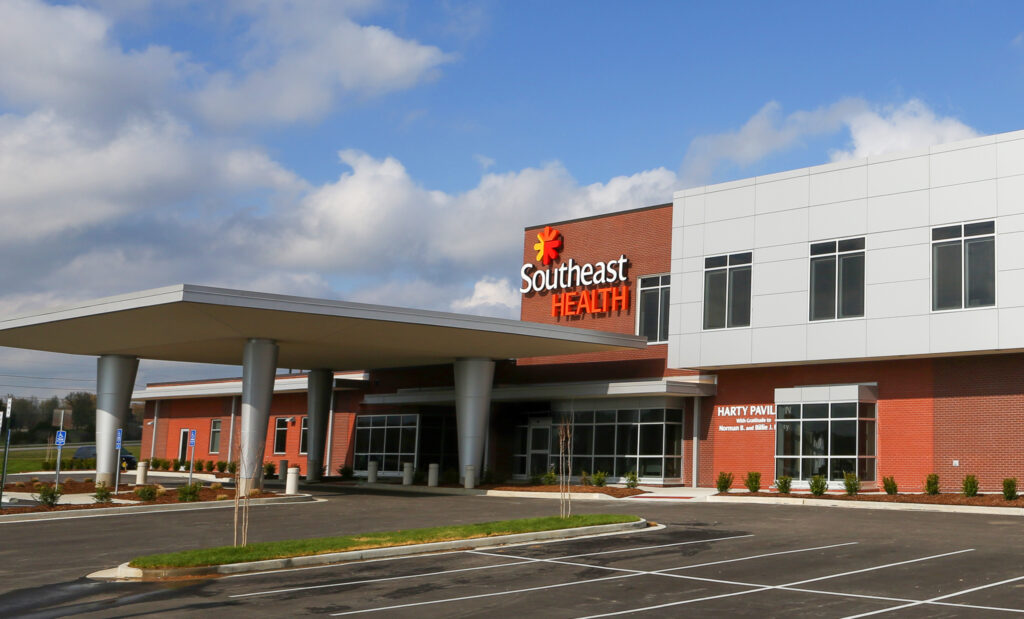
Despite being in the middle of a pandemic in 2021, SoutheastHEALTH took the cue from regulatory bodies asking hospitals to implement opioid stewardship programs and used a personal touch to educate staff to make changes that save lives.
“Missouri has a large problem with opioid misuse, so as health care professionals it’s our job to do all we can to help fight the problem,” said Sherrie Lane, PD, Director of Pharmacy at SoutheastHEALTH. “Overdose deaths are a crisis in our state, and it’s a huge nationwide problem as well.”
Their effort began through the pharmacy residency program. Residents are required to conduct research projects and Sherrie guided one of them toward an opioid initiative that would lay the foundation for their stewardship program.
Relationships with other hospitals also came into play. A colleague at a hospital in Texas who used Cerner electronic medical record (EMR) system, the same one as SoutheastHEALTH, shared that they used an opioid toolkit within their EMR. Sherrie worked with her internal IT department to locate the toolkit within the system, activate it and begin educating physicians on how to use it.
Rather than pushing out the new opioid stewardship directive through an email, Sherrie worked with Jennifer Hamilton-Gilpin, Director of Quality at SoutheastHEALTH, to create a presentation. In turn, Jennifer attended provider meetings to educate staff in person and explain the importance of the initiative.
“Any time you ask a doctor to change their routine, it can be difficult,” Sherrie said. “They can be the nicest person in the world, but breaking a routine is hard for anyone and you must handle it correctly. Jennifer went to all their meetings to personally encourage this important change.”
Matt Janzow, who was chief medical officer during this time, was a champion of the initiative and also supported the transition during staff meetings.
Leadership first asked physicians to stop writing prescriptions on paper and begin doing it electronically. The hospital needed to capture data, analyze it, and determine where to shift their focus. Sherrie noted that they were doing well by not overprescribing for moderate and severe surgeries but saw room for improvement in prescribing for minor surgeries. Educational material was created and presented to surgeons, which improved their rates even more.
They also began educating patients on how to take a critical role in protecting themselves. The hospital increased its efforts to get the overdose drug, Naloxone, into the hands of its patients. Sherrie said they encountered some resistance from patients about having Naloxone in their homes.
“Some of our older patients think that if someone sees (Naloxone) in their house, it’s assumed that you have a drug problem,” she said. “We need to educate them that this is not the case. Naloxone is for your safety. We work hard to explain this to our patients and get them to accept it.”
Future goals include programming rules in the hospital’s EMR that prompt automatic notices for opioid prescriptions. This can be especially important during discharge for staff to know which patients should be offered Naloxone. SoutheastHEALTH’s IT department is already working on programming the rules, which takes time because notices need to be triggered at certain levels of a prescribed drug.
Sherrie said all these changes contribute to a larger part in fighting back against America’s opioid crisis.
“Perhaps, in five years or so, all these efforts will have impacted the opioid problem and the overdose death curve will either flatten or begin decreasing,” she said. “A lot of these patients never started out with a problem, but maybe they began having pain, then surgery, and then eventually they become addicted. It’s our job to step up and help fight back.”
